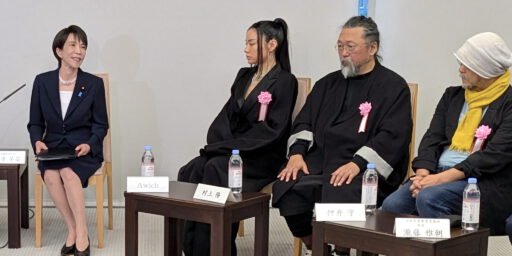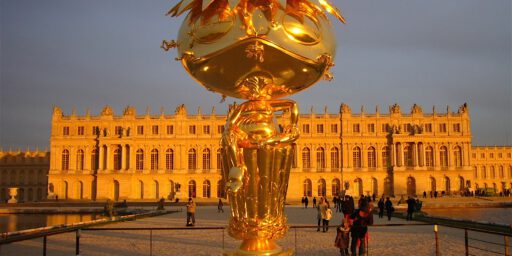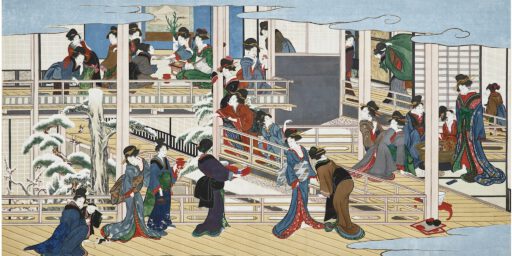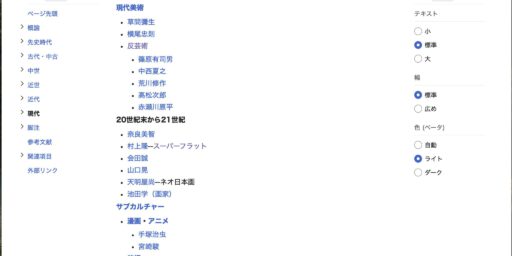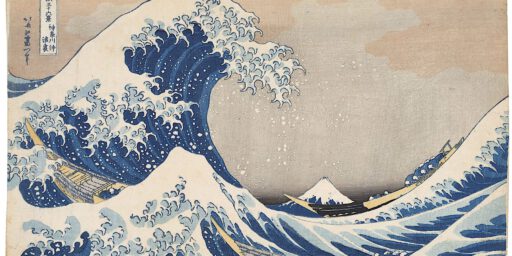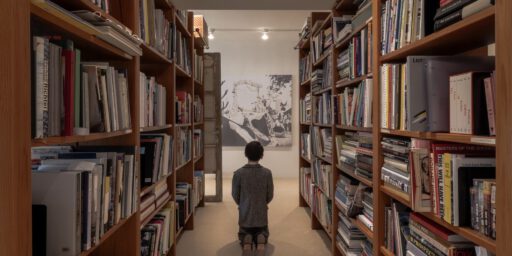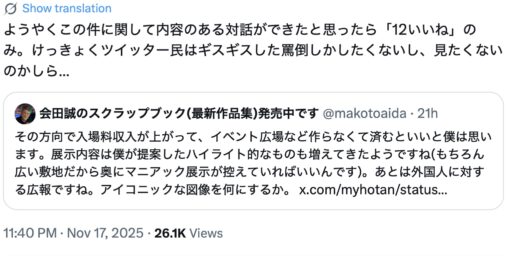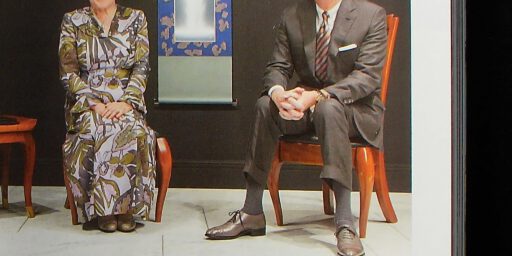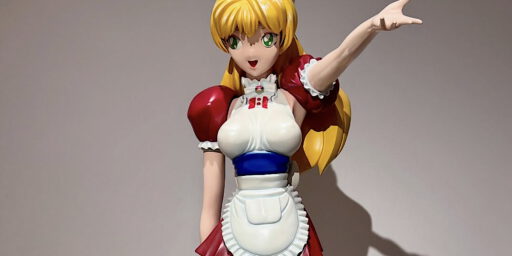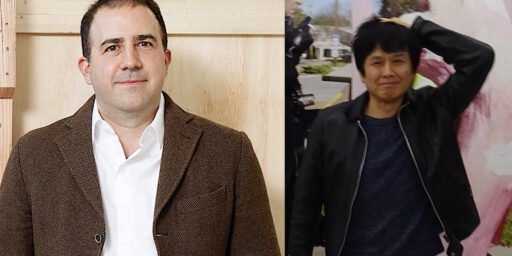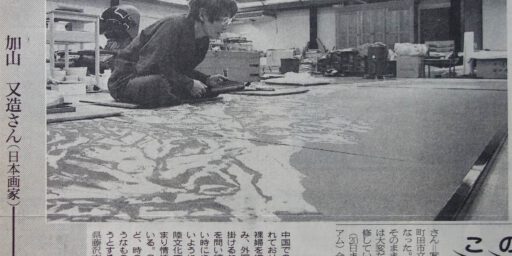The Slow Death of the New York Art Scene (2) ニューヨーク・アートシーンの緩慢な死 (2)
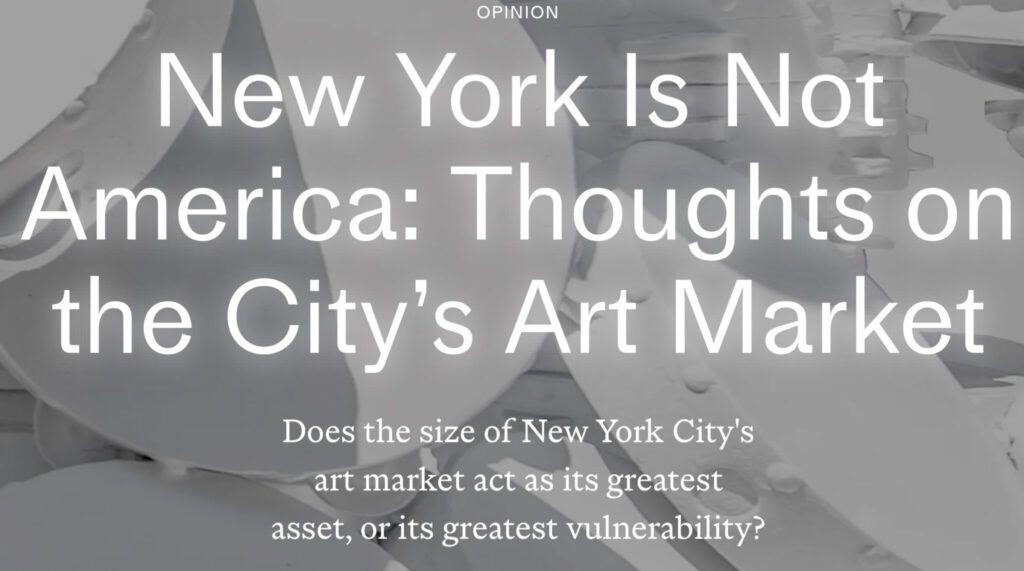
The continuation of “The Slow Death of the New York Art Scene” ニューヨーク・アートシーンの緩慢な死 (1)
https://art-culture.world/articles/slow-death-of-the-new-york-art-scene-1/
For about 6 years there has been a growing feeling that it is not important for artists to exhibit in New York.
To put it bluntly: New York is out.
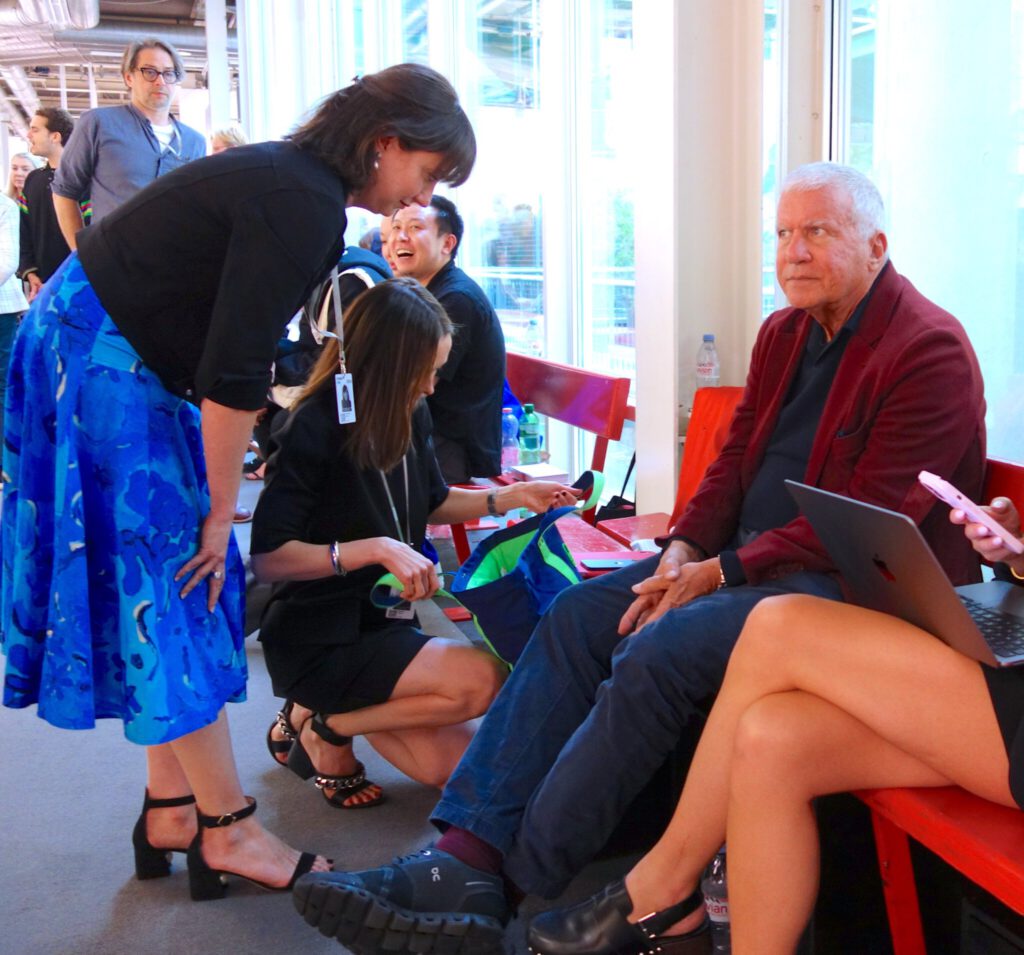
The music plays somewhere else.
With the establishment of international art fairs in Basel, London, Hong Kong, Paris, Seoul and Tokyo, the gravitational pull of contemporary art has shifted away from New York, away from American artists, towards Europe and Asia.
The USA also cannot offer a Venice Biennale, documenta Kassel or Gwangju Biennale. Berlin plays a more important role for artists than New York.
The article by Tom Seymour about the “Armory Show” in New York and “Independent 20th Century” is symptomatic of the plight of the New York art scene.
God bless America.
Tokyo, 2025/9/5
Mario A
New York Is Not America: Thoughts on the City’s Art Market
Does the size of New York City’s art market act as its greatest asset, or its greatest vulnerability?
2 September 2025, Ocula
quotes:
‘The size of the city’s art market means that, in a period of sustained decline, there are a lot more businesses at risk of closing,’ Sutton notes, pointing to recent gallery closures like the seemingly well-established Venus Over Manhattan, Clearing and Blum, as well as the Art Dealers Association of America cancelling its annual Upper East Side fair, as a ‘canary in the coalmine’.
Auction houses are also under strain. ‘They too are having to make sacrifices, slashing jobs and retooling their fee structures,’ Sutton says. ‘For Christie’s, Phillips, and Sotheby’s, success in the big November auctions will hinge on being able to land a handful of major estates, and the incentives will invariably eat into their profit margins.’
For Tom Finkelpearl—the former Commissioner of the New York City Department of Cultural Affairs, appointed in 2014 by mayor Bill de Blasio and serving through the end of 2019—the picture is one of resilience layered over fragility.
‘New York City has a very robust art world because it is so multifaceted.’ he says. ‘But a key detail is—the art budget keeps going up. If you look at City Hall’s finances this year, you’ll see that they have the highest arts budget adjusted for inflation ever this year.’
…
But it’s the affordability crisis that cuts deepest. This is the platform that has given Zohran Mamdani, a 33-year-old Democratic Socialist assembly member for Queens, a real chance of becoming mayor of the city after running a campaign based on cost of living policies.
‘This is exactly why Mamdani can and probably will easily beat somebody with ten times the money,’ says Finkelpearl. ‘New York is expensive, the most expensive city in America and perhaps the world, and it is expensive because of real estate.’
He cites artists like Christine Sun Kim, an artist currently exhibiting at the Whitney, who recently left New York to live in Berlin.
…
‘The cost of doing business in New York, plus the uncertainty surrounding U.S. import and export duties, is prompting the art market to look elsewhere.’ Taken together—tariffs, real estate pressures, closures, political experiments, and a global recalibration—New York remains singular. Its infrastructure sustains dominance, but also amplifies risk. Its institutions are shielded, but its smaller organisations are increasingly exposed. Its fairs retain weight, but are reliant on continuing to lure in buyers.
full text:
https://ocula.com/magazine/opinions/new-york-is-not-america-art-market
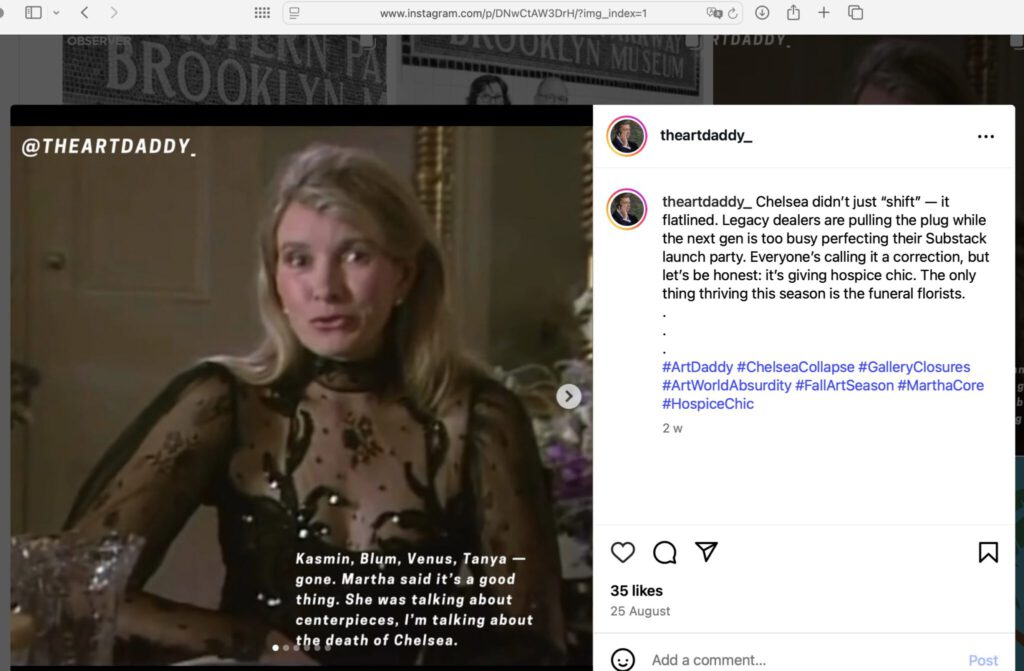
https://www.instagram.com/p/DNwCtAW3DrH/?img_index=1

The Death of the Full-Time Critic and What It Means for the Future of Art Writing
If criticism and thoughtful engagement continue to be pushed aside in favor of shallow viral moments, the cultural conversation risks becoming as thin and ephemeral as the Instagram stories that fuel it.
By The Art Daddy • 08/26/25
quotes:
The latest shakeup to hit the New York Times culture desk, in which longtime critics Margaret Lyons, Jon Pareles, Jesse Green and Zach Woolfe were either reassigned or let go entirely, was an indication of a larger crisis within cultural reporting and criticism at large. Full-time critics at major publications have been disappearing at an alarming rate for some time, and the ripple effects are shaking the very foundation of art criticism itself. (And despite the layoffs, the Times recently published a job listing for a theater critic.)
At both legacy newspapers and specialized art magazines, staff cuts and editorial reshuffling are decimating once vibrant hubs of cultural commentary. The New York Times is merely the latest high-profile example, but the trend extends across the board. There is a seismic shift happening in the media landscape, fueled by the rise of digital platforms, declining print readership and mass layoffs in cultural journalism. It also points to a larger epidemic in the consumption of this kind of writing, and how people engage with this industry wide.
Mass media layoffs have targeted arts and culture desks disproportionately. A 2023 survey by Georgetown University found that the number of journalism jobs is expected to decline by about 35 percent through 2031, which equates to more than 20,000 jobs. This is nothing new. More than a decade ago, Andrew Russeth wrote here that there were fewer than ten full-time art critics left at major outlets. A 2018 survey by the National Arts Journalism Program found that only about a third of visual arts writers and critics worked in staff positions. The pandemic accelerated this hemorrhage with many outlets slashing arts coverage or folding cultural desks entirely.
…
The trend risks creating an art audience that doesn’t know, or worse, doesn’t care, to dive deeper and misses out on the real power of art to disrupt, provoke and illuminate. If criticism and thoughtful engagement continue to be pushed aside in favor of shallow viral moments, the cultural conversation risks becoming as thin and ephemeral as the Instagram stories that fuel it.
Meanwhile, the world of traditional art media is rapidly shrinking. Artnet, once hailed as a digital pioneer and a beacon of serious cultural journalism, was snapped up by hedge fund Beowolff Capital earlier this year—a corporate overlord with zero interest in nurturing editorial integrity but plenty of enthusiasm for slashing budgets to boost profit margins and gutting editorial teams.
The same hedge fund holds a controlling stake in Artsy, the digital marketplace with an editorial arm that was already stretched thin. Now, with consolidation looming, it’s all but guaranteed that its editorial resources will be gutted or folded into a leaner, meaner content machine. This means the erosion of thoughtful, independent criticism in favor of clickbait and sponsored content designed to sell art, not interrogate it.
Penske Media Corporation, the corporate giant that owns several major art publications, including ARTnews, Art in America and Artforum (as well as Variety, Rolling Stone and others), has also tightened its grip, squeezing editorial freedom under the iron fist of business priorities. The result is a homogenization of content, where the independent voices get muffled or sidelined and the emphasis shifts to market-friendly stories that appease advertisers and sponsors rather than challenge readers or industry insiders.
The Art Newspaper and Hyperallergic serve as the last real barometers of independent art journalism, but even they operate with significantly smaller teams and tighter budgets. Their limited resources mean there is less investigative reporting, fewer in-depth features and more reliance on contributed content. While they valiantly keep the torch burning, the landscape is grim for both critics and readers craving critical, independent voices that hold the art world accountable.
The New Yorker, long a literary and cultural touchstone, drew sharp criticism in 2023 when it dramatically scaled back its arts section. The move led to the departure of veteran writers, including Johanna Fateman, one of the sharpest critics working today. In their place, the magazine installed Jackson Arn, a relatively untested writer whose stint was cut short after allegations of inappropriate behavior at a gala surfaced in March. In response to the contraction of coverage, Fateman and fellow critic John Vincler launched The Critics’ Table at Cultured. Over the past year, the project has quickly become a go-to space for incisive and nuanced criticism, helping to fill the gap left by The New Yorker and standing alongside stalwarts like Triple Canopy in sustaining a serious discourse around contemporary art.
Legends like Roberta Smith have retired, and voices like Greg Tate, who brilliantly bridged culture, music and social critique, are gone, too. Even Jerry Saltz, despite being prolific and problematic, is part of a fading generation barely holding on amid newsroom cuts and shrinking cultural coverage.
As the New York Times cultural desk sheds more of its star critics, who’s left? It’s certainly not Nate Freeman at Vanity Fair, despite his buzz. Or the Manhattan Art Review (with whom I have a standing issue). The pipeline for fearless, deeply informed, intellectually rigorous critics feels dangerously dry. However, there is a flicker of hope in figures like Aruna D’Souza and Johanna Fateman, who are quietly charting the future of art criticism, combining social consciousness, unflinching honesty and a readiness to disrupt entrenched systems.

2025/9/5
Welcome to the art law column, a monthly look at recent developments in art law, written by Alexander Herman, the director of the Institute of Art and Law. It covers case law, legal disputes, legislation, treaties, restitution and contracts affecting the art world. It’s meant to be accessible, and doesn’t require a law degree as a pre-requisite. Mind you, it’s not legal advice…
In our first instalment, Herman looks at The Manhattan District Attorney’s aggressive antiquities seizures—around 6,000 objects since 2017, raising concerns about the risks of sending art to New York
https://www.instagram.com/p/DOOSHI5D16I/
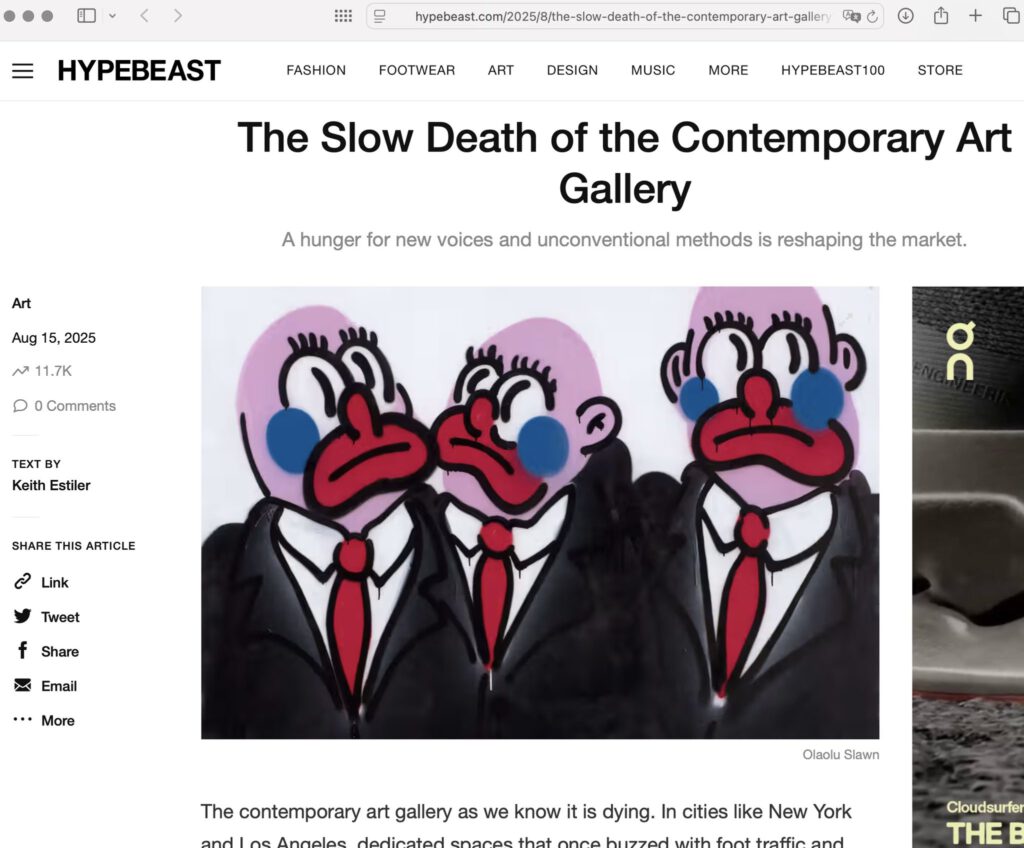
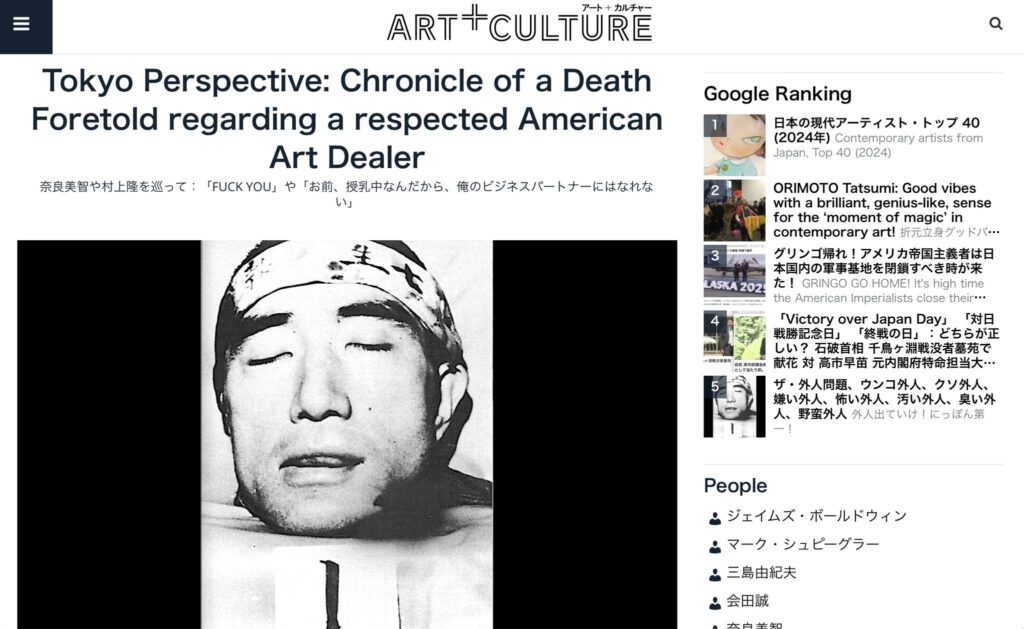
What Happened to the Armory Show?
Is this year’s fair a reflection of a tired, oversaturated, and complacent art market, or am I looking for excitement and discovery where they can no longer be found?
Hakim Bishara, September 6, 2024
Armory Show, mon amour, what happened to you? I hardly recognize you anymore.
You used to be the best of the best, the jewel in the crown, the flagship, the mothership, the talk of the town. How did you become so bloated and dull?
I used to think of you as the Rolls-Royce of art fairs; now you feel like a Tesla at best. During the VIP preview yesterday, September 5, I had to skip over every five or six booths before finding something worth stopping for. By God, even the coffee was bad. The sandwiches were even worse.
Also, why are you suddenly selling jewelry and mattresses? Where’s your famous refinement and class? Who are you?!
more @
https://hyperallergic.com/948571/what-happened-to-the-armory-show-2024/
2025/9/9 up-date:
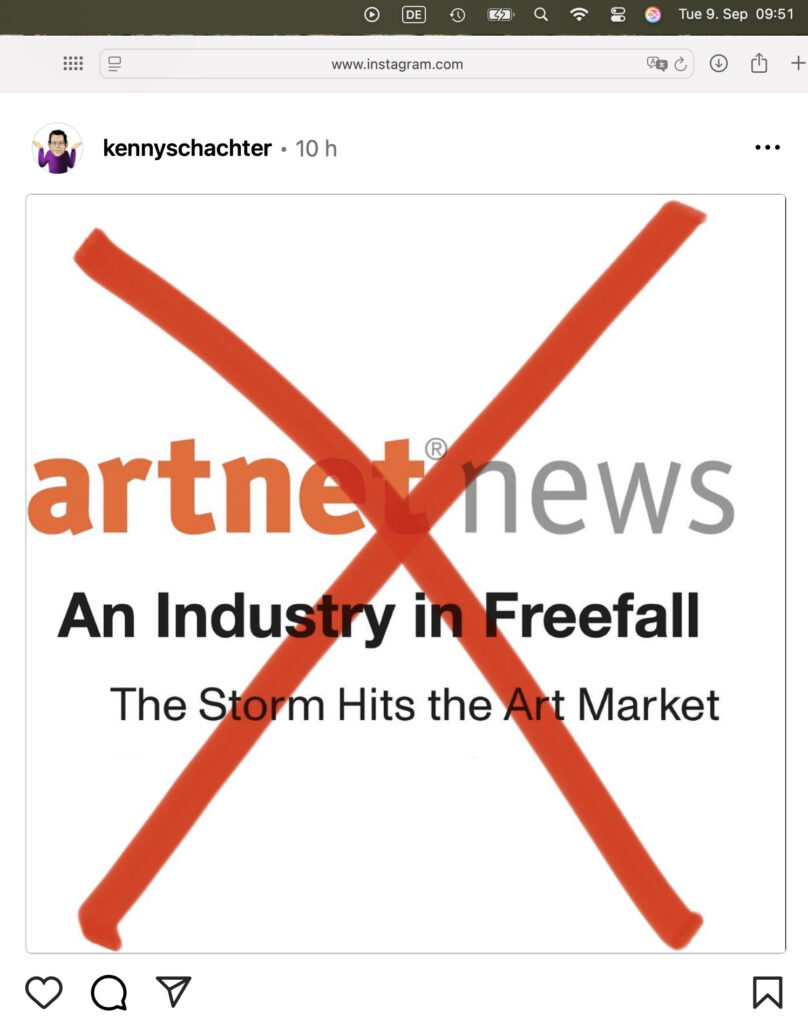
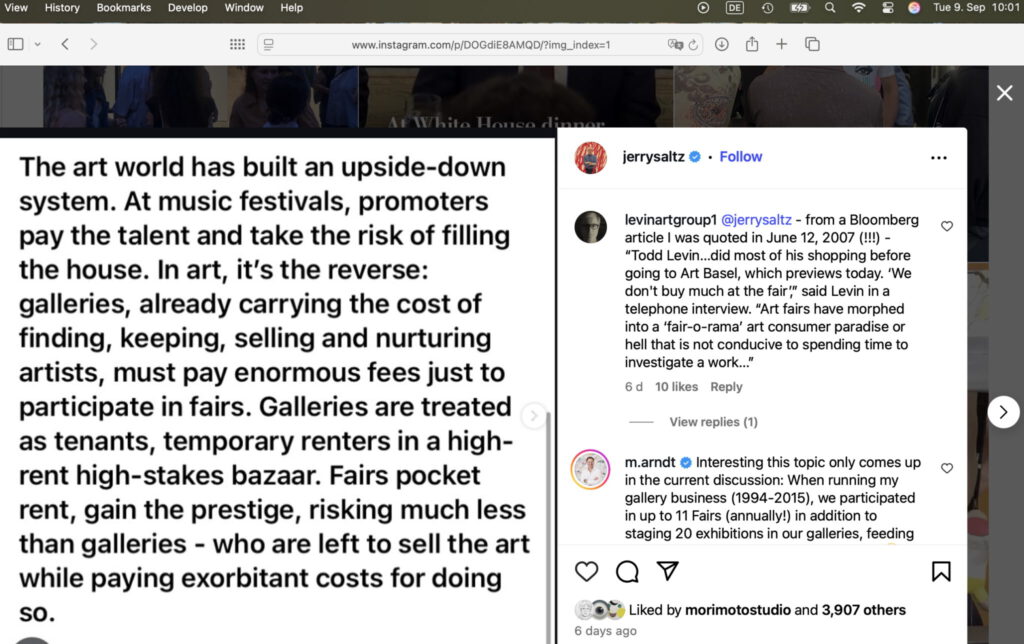
Check also:
Curatorial Fiasco by Francesco Bonami. Prince, Murakami, Stingel, Cattelan, Fischer @ Dead Gago Art Basel ’25
キュレーター フランチェスコ・ボナミの大失敗。 プリンス、村上、スティンゲル、カテラン、フィッシャー @ 死んだ ガゴ・アート・バーゼル ’25
https://art-culture.world/articles/bonami-fiasco-gagosian/
Trump: “Kiss my Ass” means: Boycott American Art! Blum and Pace Galleries: leave Japan!
トランプ:「俺のケツにキスしな!」= アメリカン・アートをボイコット! BlumやPace ギャラリーは日本から出て行け!
https://art-culture.world/articles/boycott-american-art/
Me and Mr. Robinson, God bless you please, coo coo ca-choo, hey, hey, hey
https://art-culture.world/articles/walter-robinson/
とても悪い人、アートアドバイザー リーザ・シッフ氏:「私はフェイク、毎日 詐欺師でした。」
A very bad person, art advisor Lisa Schiff: “I was a fake, a fraud every day.”
https://art-culture.world/articles/art-advisor-lisa-schiff/
「テイラー・スウィフトなんて大嫌い!」米国が未開の国であることは明らかです。
“I HATE TAYLOR SWIFT!” shows clearly, the USA is an uncivilised country.
https://art-culture.world/articles/taylor-swift-テイラー・スウィフト/
Damien Hirst sells Jeff Koons “Balloon Monkey”
ダミアン・ハーストがジェフ・クーンズの 「バルーン・モンキー 」を販売
https://art-culture.world/articles/hirst-koons/
Tokyo Perspective: Chronicle of a Death Foretold regarding a respected American Art Dealer
奈良美智や村上隆を巡って:「FUCK YOU」や「お前、授乳中なんだから、俺のビジネスパートナーにはなれない」
https://art-culture.world/articles/blum/
Will ‘ARTnews’ and ‘Art in America’ disappear as print journals?
https://art-culture.world/articles/artnews-and-art-in-america-disappear-as-print-journals/
スイスの「ハウザー&ワース」が香港に新スペースオープン:「マーク・ブラッドフォード個展」、東京にギャラリー進出も間近?
Hauser & Wirth opens with Mark Bradford in Hong Kong, could be Tokyo next?
https://art-culture.world/articles/hauser-wirth-ハウザー-ワース-香港/
アメリカはいかにして信用を失ったか How the US lost its credibility
https://art-culture.world/articles/how-the-us-lost-its-credibility/
ダメ、ソシオパス男たち、自分のナラティブ、イメージを高める、ボイス vs トランプ
Bad men, sociopaths Beuys and Trump, cultivating their narratives
https://art-culture.world/articles/beuys-trump/
Art world darling, cool Kenny Schachter @ Art Basel
アート界の寵児、クール ケニー・シャクター @ アート・バーゼル
https://art-culture.world/articles/kenny-schachter/
Extremely boring, pretentious, outdated works by “American Artist” Cady Noland @ GAGOSIAN GALLERY Park & 75, New York City, “AMERICA”
キャディ・ノーランド
https://art-culture.world/articles/cady-noland/
#USABS U.S. ARTY BULL SHIT. NFTデジタル・アーティスト ビープル:「美術史の流れを変えたい」や「悪役である」というメリット
#USABS。NFT Digital Artist Beeple: “I want to change the course of art history” and the merit of “being the bad guy”
https://art-culture.world/articles/nft-beeple-digital-artist-ビープル/
New York’s Arty American Bullshit Spreads Around The World: KAWS.
KAWS。ニューヨークのアメリカン美術ウンコを世界へ。
https://art-culture.world/articles/new-york-arty-bullshit-kaws/
五木田智央のニューヨークのアートディーラー、メアリー・ブーンは刑務所に30ヶ月間
GOKITA Tomoo’s New York Art Dealer Mary Boone sentenced to 30 Months in Prison
https://art-culture.world/articles/gokita-tomoos-new-york-art-dealer-mary-boone-sentenced-to-30-months-in-prison/
“Bribed” journalism at Wall Street Journal: Gagosian pushing up Grotjahn for U.S. Art Flippers, 6 days before the exhibition
https://art-culture.world/articles/gagosian-grotjahn-for-u-s-art-flippers/
ジョアン・ミッチェルのアート・ディーラーが突然変更に:「このアート界はとても野蛮になった」/ (+ ポンピドゥー・センター・メッス画像)
In the context of recent changes by Joan Mitchell’s art dealers: : “This art world has become so uncivilized” // (+ pics from the Centre Pompidou-Metz)
https://art-culture.world/articles/joan-mitchells-art-dealers-problem-this-art-world-has-become-so-uncivilized/
Hedge fund titan Israel Englander pays 1 billion US$ to ex-wife and photographer Caryl, who left him for art dealer Dominique Lévy
New York’s High Society + its Art Scene: Prestige, Sex, Collectors and Money…
https://art-culture.world/articles/dominique-levy/
Prominent Collector and Dealer Adam Lindemann Arrested // New York Art World
https://art-culture.world/articles/adam-lindemann-arrested/
美術評論家:次の絶滅危惧種? Art critics: Next endangered species?
https://art-culture.world/articles/art-critic/
The Year 2021. Still Symptomatic For New York’s Art Scene: Taking Drugs.
2021年。麻薬とニューヨークのアートシーン
https://art-culture.world/articles/new-yorks-art-scene/
